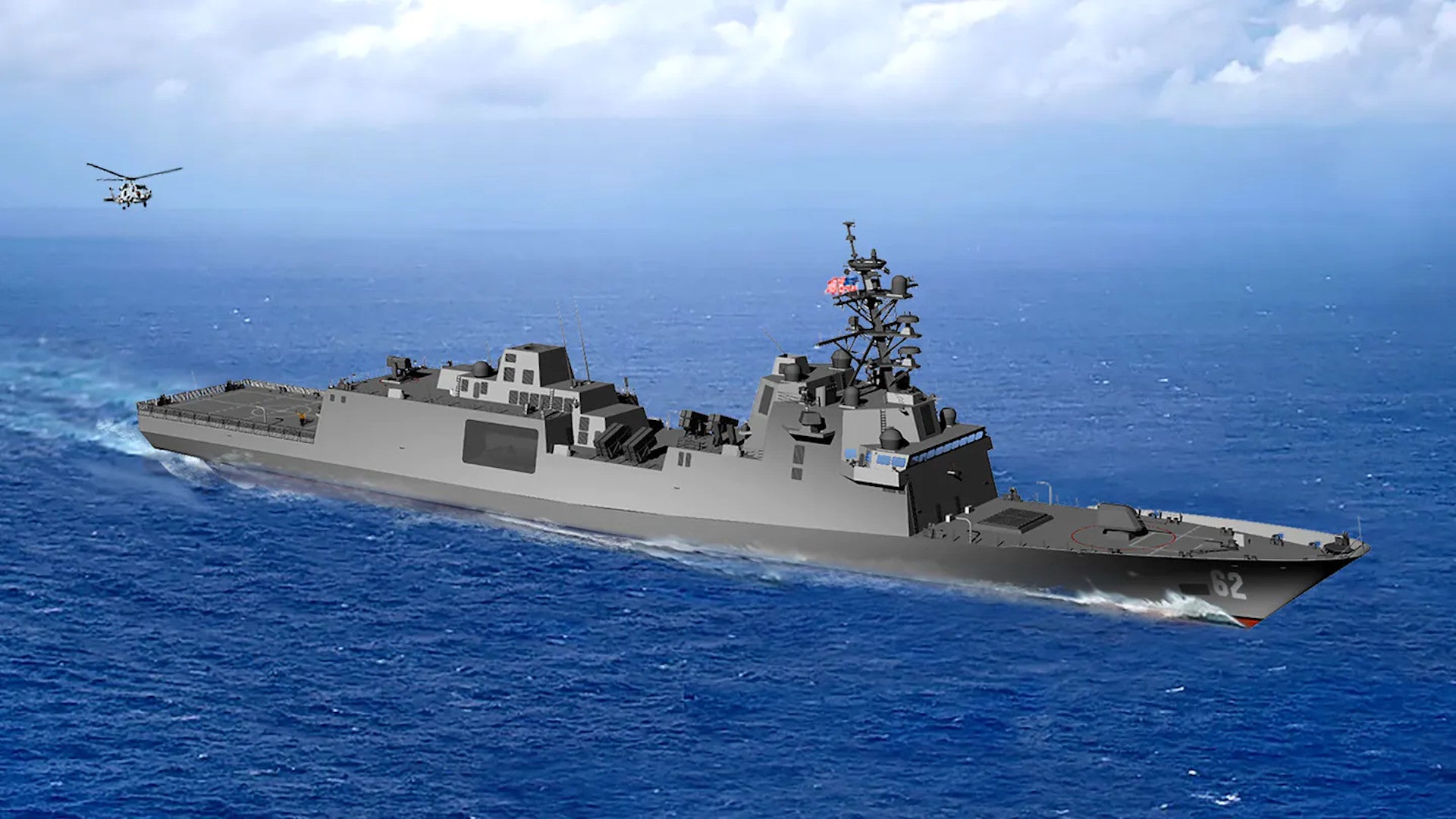A Pentagon contracting announcements indicates that the first of the U.S. Navy’s new class of guided-missile frigates, commonly referred to as FFG(X), will be named the USS Brooke. Former Acting Secretary of the Navy Thomas Modly had sought to the name the first of these ships the USS Agility, before resigning earlier this year amid a scandal having to do with a serious COVID-19 outbreak on the Nimitz class aircraft carrier USS Theodore Roosevelt.
Editor’s note: See update at the bottom of this post.
The mention of a new frigate named USS Brooke appeared in the Pentagon’s daily contracting notice for July 17, 2020, in an entry having to do with the purchase of Raytheon Enterprise Air Surveillance Radars (EASR), which you can read about in more detail here. The FFG(X)s, among other future Navy ships, are slated to receive a fixed-face variant of the EASR radar, now designated the AN/SPY-6(V)3.
The full entry in the contracting notice is as follows:
“Raytheon Missiles and Defense, Marlborough, Massachusetts, is awarded a $125,881,928 fixed-price, incentive fee modification to previously awarded contract N00024-16-C-5370 to exercise options for the Enterprise Air Surveillance Radar (EASR) low rate initial production (LRIP). Work will be performed in Marlborough, Massachusetts (76%); Andover, Massachusetts (18%); Sudbury, Massachusetts (5%); and Portsmouth, Rhode Island (1%). This option exercise is for the production of six EASR LRIP units; four AN/SPY-6(V)2 (air and missile defense radar) EASR rotator LRIP units; and two AN/SPY-6(V)3 EASR fixed-faced LRIP units. The AN/SPY-6(V)2 EASR rotator LRIP units will be deployed on the USS Bougainville (LHA-8); USS John C. Stennis (CVN-74); USS Richard M. McCool Jr. (LPD-29); and USS Harrisburg (LPD-30). The AN/SPY-6(V)3 EASR fixed-faced LRIP units will be deployed on USS John F. Kennedy (CVN-79); and USS Brooke (FFG-1). Work is expected to be completed by January 2023. Fiscal 2017, 2018 and 2020 shipbuilding and conversion (Navy) funding in the amount of $122,301,170 will be obligated at time of award. Funds will not expire at the end of the current fiscal year. The Naval Sea Systems Command, Washington, D.C., is the contracting activity.”
The hull number given, FFG-1, appears to be a typo, as it has already been reported that the first FFG(X) will be FFG-80. FFG-1 refers to a previous first-in-class USS Brooke, a guided-missile frigate that first entered service with the Navy in 1966. The service has not named any other ships after John Mercer Brooke, a 19th Century American naval officer, as well as scientist and engineer, who played a key role in the laying of the Great Transatlantic Cable, since then.
The original Brooke class vessels were the first guided-missile frigates in the Navy. The design was based on the Garcia class, originally categorized as destroyer escorts, but which were later termed frigates.

The principle change between the Garcias and the Brookes was the addition of the RIM-24 Tartar surface-to-air missile system, along with improved radars. The Brooke and her five sister ships also had a five-inch main gun, deck-mounted torpedo tubes, and an eight-cell launcher for the RUR-5 Anti-Submarine Rocket (ASROC). For the time, this gave them a decidedly multi-role set of capabilities for their size, in particular, a robust air defense capability, something the Navy is also looking for in its new frigates.
The Lockheed Shipbuilding and Construction Company in Seattle, Washington, built Brooke and the next two ships in the class. Bath Iron Works in Maine built the remaining three examples. In April 2020, the Navy picked Marinette Marine, a Wisconsin-based subsidiary of Italian shipbuilder Fincantieri, to build at least the initial batch of FFG(X)s, which will be based on its parent company’s established Franco-Italian Fregata Europea Multi-Missione (FREMM), or European Multi-Mission Frigate.
While it remains unconfirmed, Brooke certainly seems like it might make sense name for these new FFG(X)s. It has more significant Navy history and heritage behind it than former Acting Secretary of the Navy Modly’s proposed Agility class. Additional suggested names for further ships in the class included Dauntless, Endeavor, and Intrepid, according to a document USNI News obtained in April. Navy officials reportedly rejected these proposals entirely.
However, John Mercer Brooke also resigned his Navy commission during the American Civil War to join the Confederacy, becoming a key figure in the Confederate Navy, including being involved in the conversion of the ironclad CSS Virginia. Naming a ship after him now, at a time when there is a renewed push to remove monuments and other references to the Confederacy from public display across the United States, including within the U.S. military, could prove controversial, at best.
We have reached to the Navy to confirm whether or not the service has indeed settled on USS Brooke as the first example of its new guided-missile frigates, but as it sits now, it is right there in black and white.
UPDATE:
The Navy got back to us and they say this was a mistake—at least that is their official position at this time. An email sent to The War Zone regarding our query reads in part:
…We are working to correct the contract announcement that went out. The Secretary of the Navy has not named the FFGX yet. We are working to understand how this happened.”
We will update this post with more info as we receive it, but for now, the first FFG(X) remains unnamed, at least officially.
Contact the author: Joe@thedrive.com
